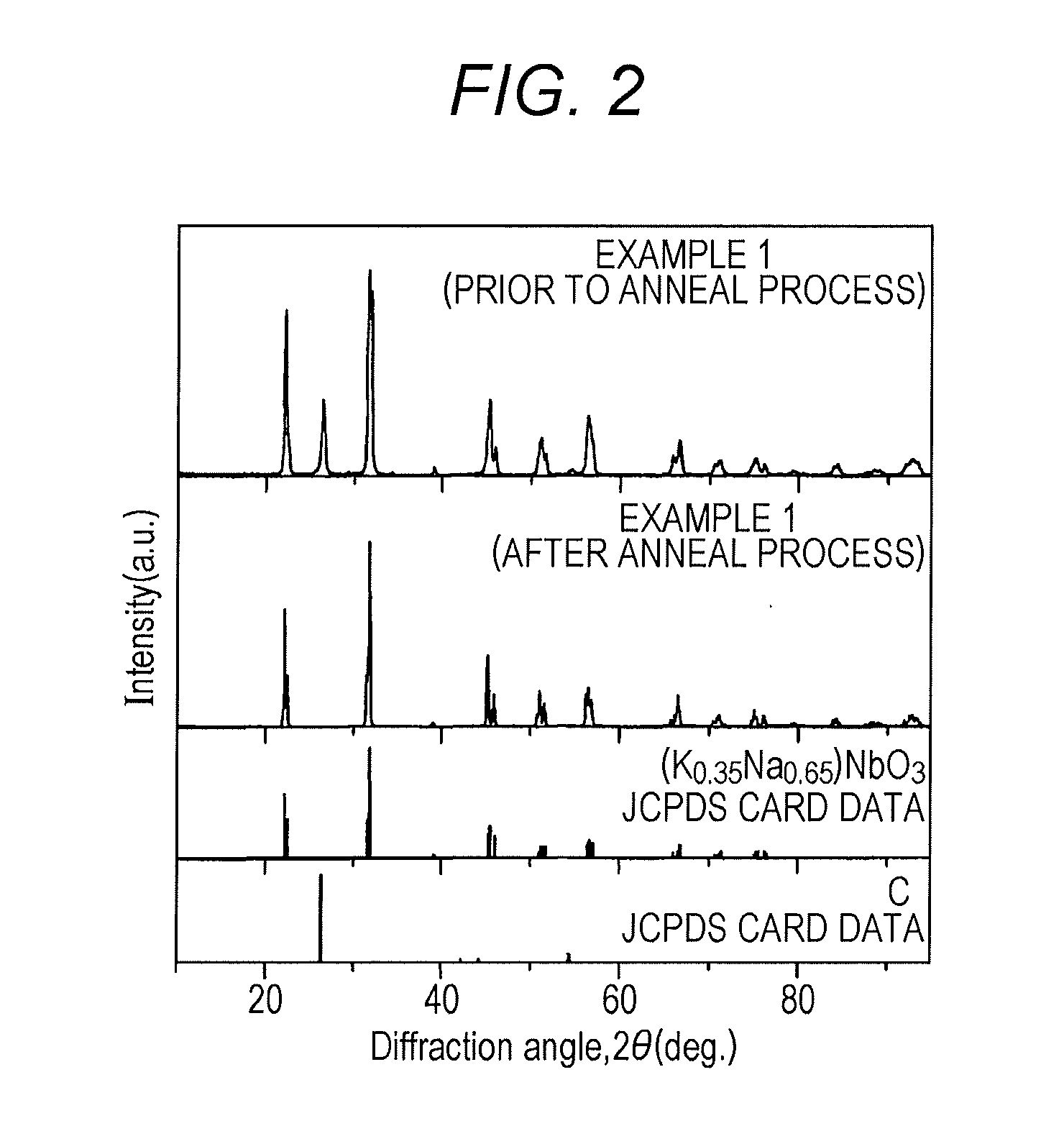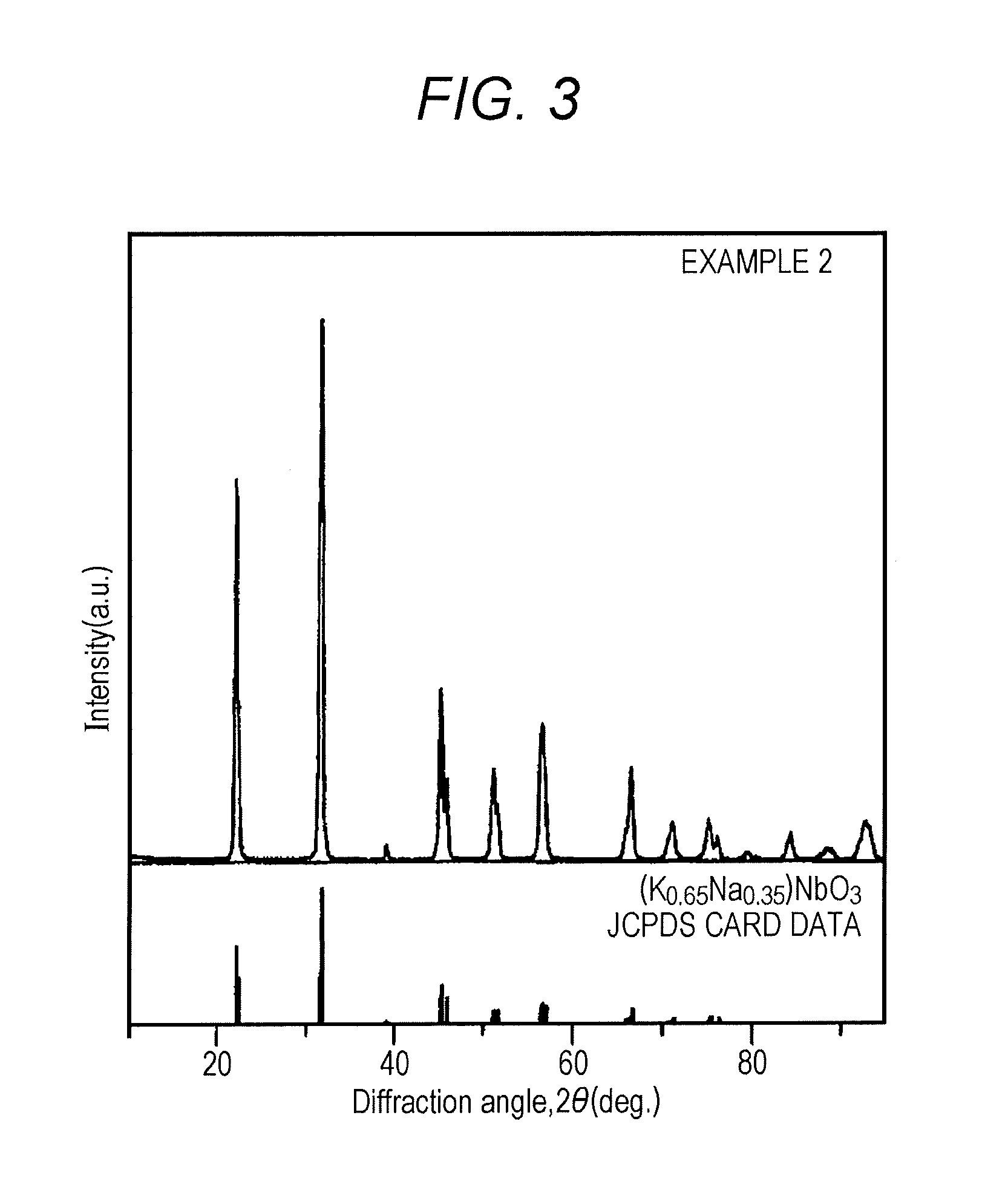Power generation material, power generation element, and power generation system
a power generation element and power generation technology, applied in thermoelectric device junction materials, inorganic chemistry, chemistry apparatus and processes, etc., can solve the problems of inability to obtain sufficient power generation performance, inability to use high-temperature heat sources, and large amounts of thermal energy emitted and lost in the form of exhaust heat and light, etc., to achieve the effect of sufficient power generation performan
- Summary
- Abstract
- Description
- Claims
- Application Information
AI Technical Summary
Benefits of technology
Problems solved by technology
Method used
Image
Examples
example 1
[0160]A powder of K2CO3, a powder of Na2CO3, and a powder of Nb2O5 were compounded to achieve the molar ratios of K2CO3:Na2CO3:Nb2O5=1:1:2. The powders were stirred and mixed with ion-exchanged water in a wet-type ball mill (from Nikkato Corporation) using zirconia balls for 24 hours, and then dried.
[0161]The obtained powder was heated in air at a temperature-increase rate of 5° C. / min. The powder was heat-treated at 880° C. for 4 hours, mixed and pulverized in a dry-type ball mill (from Nikkato Corporation) using zirconia balls for 12 hours.
[0162]Then, polyvinyl alcohol as a binder was added to be 0.04 part by mass relative to a total amount of 100 parts by mass of the powder after heat treatment and the polyvinyl alcohol. This was followed by stirring and mixing in the wet-type ball mill for 2 hours.
[0163]The resultant mixture was then poured into a mold. Using a hot-press device (from Fujidempa Kogyo Co., Ltd.), heating (hot-pressing) was performed at 60 MPa and 1100° C. for 2 ho...
example 2
[0165]A power generation material including (K1 / 2Na1 / 2)NbO3 and a power generation element including the power generation material were obtained by the same method as in Example 1 with the exception that, instead of the hot-press device, a spark plasma sintering machine (from SPS Syntex Inc.) was used, and that the molding was obtained by heating at 50 MPa and 920° C. for 5 minutes, using pulse electric current sintering method.
Evaluation
[0166](1) The power generation element obtained in Example 1 was measured using an X-ray diffraction (XRD) device. The power generation element according to Example 1 was measured before and after the anneal process. The obtained XRD data are shown in FIG. 2 together with the JCPDS card data of carbon (C) and (K0.65Na0.35)NbO3.
[0167]The power generation element obtained in Example 2 was also measured using the X-ray diffraction device. The obtained XRD data are shown in FIG. 3 together with the JCPDS card data of (K0.65Na0.35)...
PUM
| Property | Measurement | Unit |
|---|---|---|
| Curie point | aaaaa | aaaaa |
| temperature | aaaaa | aaaaa |
| Curie point | aaaaa | aaaaa |
Abstract
Description
Claims
Application Information
 Login to View More
Login to View More - R&D
- Intellectual Property
- Life Sciences
- Materials
- Tech Scout
- Unparalleled Data Quality
- Higher Quality Content
- 60% Fewer Hallucinations
Browse by: Latest US Patents, China's latest patents, Technical Efficacy Thesaurus, Application Domain, Technology Topic, Popular Technical Reports.
© 2025 PatSnap. All rights reserved.Legal|Privacy policy|Modern Slavery Act Transparency Statement|Sitemap|About US| Contact US: help@patsnap.com



